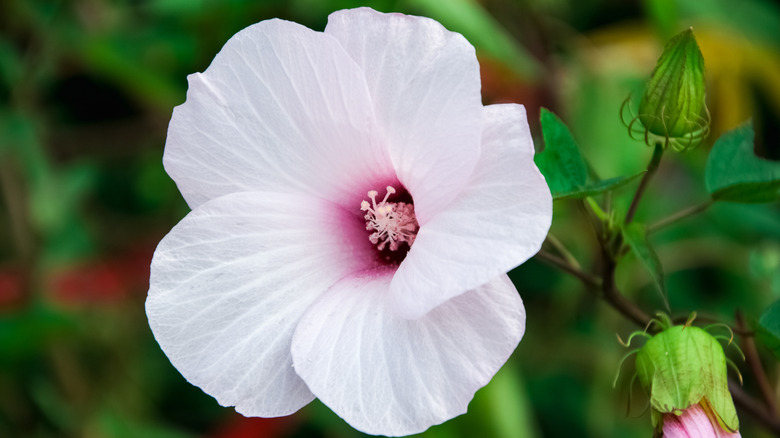Native Plant Alternatives To Musk Mallow To Grow In The Garden
At first glance, musk mallow (Malva moschata) seems like a highly attractive plant. Its blooms are a pretty pink, and crushing its foliage leaves your fingers covered in a pleasant, musky fragrance. However, if you live in West Virginia, growing this pretty, aromatic flower is a bad idea, since it's considered an invasive species in the state. Luckily, though, there are numerous native plant alternatives that you can confidently grow in your yard if you want to enjoy colorful flowers similar to those of musk mallow. These native species are a much better option because they'll not only behave themselves in your yard but are also a magnet for pollinators such as bees, butterflies and even hummingbirds.
One excellent plant alternative is the halberd-leaved rose mallow, which is endemic to southeastern Canada and nearby regions of the U.S. and can be grown in zones 4 through 9. For a more tropical alternative, you might want to consider swamp mallow, which hails from the south-eastern states and thrives in zones 8 through 11. If you have wet spots in your yard, a good choice would be coastal mallow. This species grows happily in zones 6 through 9 and can be grown around ponds or planted in a rain garden. Finally, another U.S. native worthy of mention is the common rose mallow, which grows in zones 4 through 9. This mallow is one of those shrubs pollinators adore for their massive blooms.
Distinctive features to consider when choosing a musk mallow alternative
Halberd-leaved rose mallow has large flowers typical of the hibiscus genus in shades of pink or white. This attractive herbaceous perennial can grow to a height of 6 feet in moist soil, and its flowers can reach up to 6 inches in diameter, blooming from summer to fall. Bees, butterflies, moths, and hummingbirds all enjoy this mallow's blooms.
A plant with similar attributes is the common rose mallow, which is also known as the "hardy hibiscus." It has flowers in pure white, pink, or burgundy, with a striking dark red center. You'll find that pollinators will also flock to these blooms in droves during summer and fall.
With enchanting pink flowers that are almost identical to musk mallow, the coastal mallow reaches heights of around 6 feet and can also be regarded as a pollinator magnet. This species is somewhat salt-tolerant, and its flowers, foliage, and roots are edible. Lastly, the swamp mallow would make a stunning addition to your garden with its showy large fragrant blooms that show up from spring through summer. This beauty, which is one of numerous perennials that bloom with stunning white flowers, can reach a maximum height of 15 feet and also handles wet soils.

